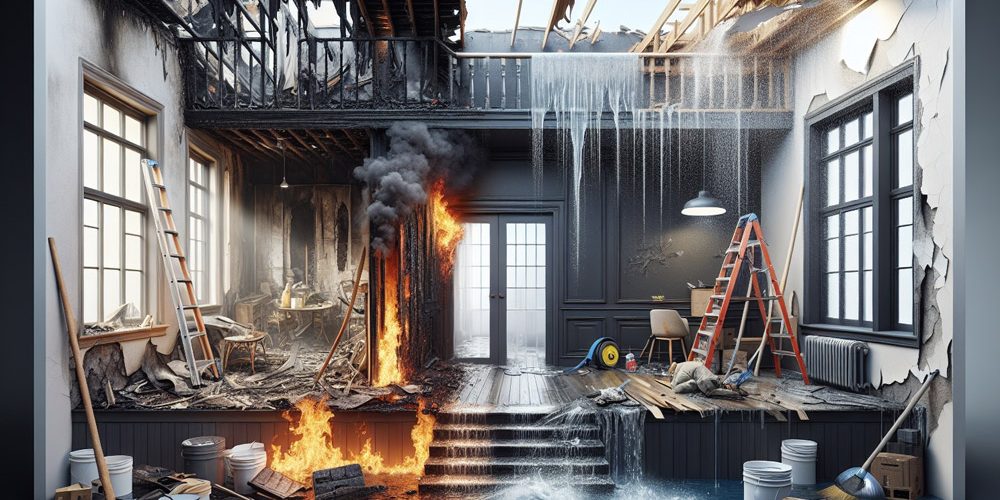
In the restoration industry, being visible online isn’t just a bonus—it’s a necessity. Whether a homeowner is dealing with flood damage, fire cleanup, or toxic mold, their search for help starts the same way: with Google. If your company doesn’t show up in those first few results, you’re losing business to your competitors—guaranteed.
That’s where SEO comes in. Search Engine Optimization helps your restoration business rank higher in search results, attract qualified leads, and build long-term authority in your local market. But SEO isn’t just about stuffing keywords into a page. For fire, mold, and water restoration companies, SEO requires a specialized approach tailored to emergency services, local visibility, and trust-building.
1. Focus on Local SEO First
Most restoration jobs are local by nature. Whether someone has a burst pipe or smoke damage, they’re looking for someone nearby who can respond quickly. This means local SEO should be your top priority.
- Set up and fully optimize your Google Business Profile (include accurate contact info, service hours, photos, and reviews).
- Create location-specific pages for every city or neighborhood you serve.
- Include local keywords like “emergency water damage repair in [city]” or “24/7 fire cleanup [location].”
- Encourage satisfied customers to leave positive reviews, as these influence both local rankings and trust.
Local SEO not only helps you rank in Google Maps and the local pack—it establishes your company as a trusted local resource.
2. Optimize for Emergency Searches
Restoration services are often needed in urgent situations. Your SEO strategy must reflect this. Think about how people search when they’re panicking over a flooded basement or smoke damage.
Incorporate urgency-based keywords into your content, such as:
- “Emergency mold removal”
- “24-hour fire damage restoration”
- “Same-day water extraction services”
Use these in your page titles, headings, and meta descriptions. And make sure your contact information is visible on every page. Your phone number should be clickable, especially on mobile devices.
3. Create Content That Answers Real Questions
When people face property damage, they have questions—lots of them. Content marketing allows you to answer those questions before they even pick up the phone, earning their trust and improving your SEO rankings.
Start with blog topics like:
- “What to do immediately after a flood”
- “How to know if you have mold in your walls”
- “Does homeowners insurance cover fire damage restoration?”
Use your blog to show your expertise, include relevant keywords naturally, and educate visitors. The more helpful your content, the more likely people—and search engines—are to trust your site.
4. Leverage AI Insights from Sentrategy
This is where traditional SEO meets innovation.
Sentrategy is the first AI designed to monitor your competitors’ customer sentiment—and turn it into actionable growth strategies. Instead of guessing what keywords to use or what content to create, our AI analyzes reviews, complaints, and comments from your competitors’ clients.
Let’s say customers consistently mention that a competing water damage company is slow to respond or doesn’t provide clear communication. That’s a strategic opportunity. You can create content that highlights your rapid response times or transparent restoration process. You’re not just optimizing—you’re out-positioning the competition using real-time data.
Sentrategy also identifies strengths your brand is already known for, such as fast service or thorough mold removal, so you can double down on what works.
5. Optimize Your Site for Mobile and Speed
Many emergency searches happen on mobile. If your site isn’t optimized for fast loading, clear navigation, and click-to-call functionality, you’re losing conversions. Google also prioritizes mobile-first indexing, meaning your mobile experience directly affects your rankings.
Ensure your site:
- Loads in under 3 seconds
- Has responsive design
- Includes visible calls to action
- Is easy to navigate even under stress
6. Use Schema Markup for Services
Adding structured data (schema markup) to your website helps search engines better understand your content. This can lead to rich snippets, such as star ratings, service hours, and direct links in search results. It improves click-through rates and trust before users even visit your site.
Schema types relevant for restoration companies include:
- Local Business
- Service
- Review
Adding schema is a technical SEO upgrade that puts you a step ahead of competitors who aren’t leveraging it.
How We Can Help
At Sentrategy, we believe smart businesses deserve smarter tools. Our AI monitors your competitors’ customer sentiment, reveals what’s working (and what’s not), and helps you build an SEO strategy around that real-world data.
From discovering overlooked keywords to pinpointing content gaps in your market, Sentrategy makes it easy to turn sentiment into strategy. If you’re a water, fire, or mold restoration company ready to dominate your local search results, our platform can guide you every step of the way.
Outrank. Outperform. Outlast. Start with Sentrategy.
